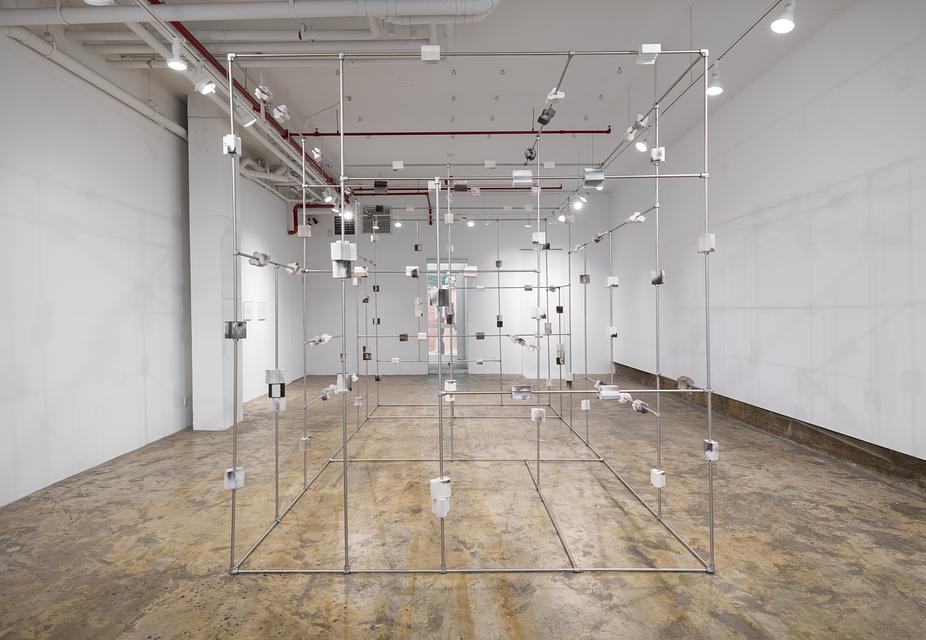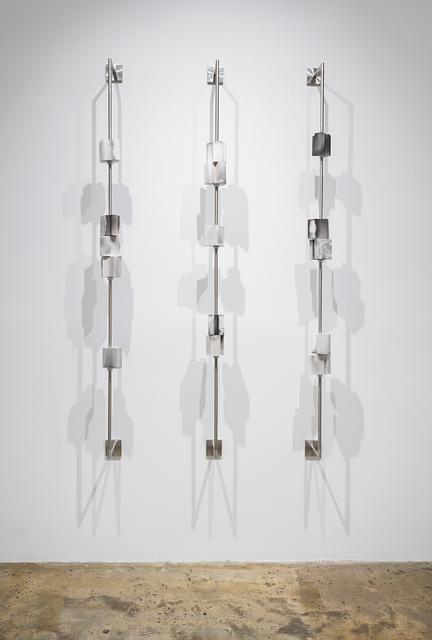"MYTHOPOEIA" - 522 W 19th Street, New York
Click for more information on Yumiko Ono
SLAG&RX is pleased to present Mythopoeia, a solo exhibition by Yumiko Ono featuring her installation Nebula.
In Yumiko Ono’s exhibition Mythopoeia—a term of Hellenistic Greek origin meaning the creation of mythology—ceramics, drawings, and textiles featuring architectural motifs revolve around the central theme of celestial bodies. Western constellations, shaped by Mesopotamian influence and later codified in ancient Greece, contrast with the independently developed star maps of ancient China. In East Asia, the Milky Way is seen as a river separating two lovers; in the West, a stream of milk from an ancient Greek goddess. Chinese constellations reflect an imperial cosmology, while Western ones often depict mythological figures and animals. Though celestial bodies are visible to all, their interpretations diverge significantly across cultural perspectives. This exhibition seeks to connect these celestial “dots” and worldviews through Ono’s perspective, interweaving distinct yet resonant mythologies, histories, and architectures—like stars forming constellations.
Ono’s artistic practice centers on the construction of fictive architecture, employing anti-architectural materials such as paper, ceramics, and textiles. Born in Japan—a country she considers as suspended between East and West—she has been engaged in exploring the relationships and parallels among Western capitalist, Eastern socialist, and Japanese architectural traditions. Her research spans Brutalist architecture of the West , Soviet-influenced Constructivism of the East, and Japan’s Metabolist movement. By using fragile, delicate materials in contrast to the traditional robustness of architecture, Ono expresses the inherent fragility and fictionality of utopian ideals.
The centerpiece of the exhibition, the installation titled Nebula, features a constellation-like arrangement of ceramic elements connected by metal pipes. Just as constellations in Eastern and Western traditions have historically constructed different meanings from the same stars, viewers are invited to create their own connections among the scattered ceramic celestial bodies. This work represents Ono’s recent inquiry into modular, scalable installations that adapt organically to each exhibition context. Developed during her residency at the Bemis Center for Contemporary Arts, the piece is based on her research into local Brutalist architecture and consists of twelve distinct, repeated forms inspired by the local buildings. Each ceramic piece was finished using an outdoor wood-firing technique, producing unique, galaxy-like surfaces that served as the conceptual starting point for this exhibition.
Two-dimensional lengthy works that she developed at Lower Manhattan Cultural Council titled Floating, echo the form of the Milky Way, depicting clusters of fictive architecture through both drawing and textile. As noted earlier, in East Asian mythology, the Milky Way—known as the Celestial River—is associated with a legend of a weaver girl and a cowherd boy, who are separated by the celestial river and permitted to reunite once a year by divine decree. Inspired by this tale, Ono presents her drawing works in pairs: one rendered in woven silk, the other on semi-transparent paper. The silk piece was produced in collaboration with Watabun, a long-established Nishijin textile company in Kyoto, translating a drawing into an intricately woven textile. This work fuses traditional Japanese craftsmanship with the story of the mythological weaver.
Complementing weaving, three thread-spool-shaped ceramic sculptures Moirai allude to the Greek goddesses of fate: one who spins the thread of life, one who measures its length, and one who cuts it. Elsewhere in the exhibition, a fictional constellation composed of architectural forms—based on stars visible from New York in all four cardinal directions on a single night—is explored through a series of drawings Cartography.
Tracing the threads spun across mediums and mythologies, the exhibition synthesizes diverse frameworks of interpreting the world—across East and West, across geopolitical ideologies—by reimagining architectural language within celestial systems. Through this process, Ono opens a transhistorical and transcultural dialogue, inviting viewers to contemplate the celestial as a shared space where disparate systems of meaning coexist.
Special thanks to Watabun Co., Ltd., the Lower Manhattan Cultural Council, and the Bemis Center for Contemporary Arts for their generous support of this exhibition.
Watabun Co., Ltd.
Japanese https://watabun.co.jp
English https://watabun.com




